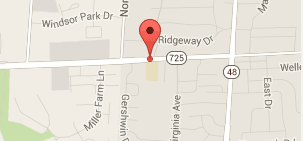Chapter 7 & Chapter 13 Differences
Key Differences Between Chapter 7 and Chapter 13
Whether you are filing a Chapter 7 bankruptcy or a 13 bankruptcy, each has its benefits and disadvantages. The ultimate decision will be determined by your financial circumstances.
At the law offices of Stamps & Stamps, Attorneys at Law, in Dayton, Ohio, our bankruptcy lawyer, Eric Stamps, can help you understand which bankruptcy you qualify for and guide you as swiftly and thoroughly through the process as is possible.
Your Roadmap to Financial Freedom Here | Dayton Offices: (937) 247-6447 or Toll Free 877-782-6770 | Free Initial Consultation | E-Mail Us
Chapter 7: Wiping Out Unsecured Debt With Certain Exceptions
The most critical difference between the Chapter 7 and the Chapter 13 is that with the Chapter 7, most, possibly all, of your unsecured debts can be discharged without any payment. Chapter 7 is a simpler, faster form of bankruptcy than the Chapter 13. A Chapter 7 bankruptcy can be completed in approximately five months after the case is filed. The Chapter 7 is also referred to as “A Fresh Start.”
Exemptions in the bankruptcy code allow many people to keep most of their assets, including their homes and vehicles. If you choose to keep your home and vehicles, you must continue to pay on the debt associated with each one. You must pass what is called an “income means” test to qualify for Chapter 7 bankruptcy. Our knowledgeable lawyer will help you understand whether you qualify and what exemptions apply in your specific situation.
Chapter 13 Debt Reorganization
With a Chapter 13, your debts are reorganized and the court establishes a payment plan based on your income. Instead of paying on ten different bills each month, you pay one monthly amount to the bankruptcy trustee, who will then pay your creditors a portion of what you owe them, usually pennies on the dollar. Unsecured creditors generally do not receive any interest on the amount paid. The Chapter 13 payment plan is unfolded over the course of three to five years. People with many assets prefer to file a Chapter 13 because they can usually keep all their assets and property, as long as their payments are made in the Chapter 13 plan. Also, in the Chapter 13 plan, many people are able to reduce their vehicle payments and sometimes eliminate a second mortgage.
How Do You Know Which You Qualify For?
At Stamps & Stamps, Attorneys at Law, we help people determine which bankruptcy they qualify for. The attorney will determine which option is better for you based on your circumstances.
Call today for a free consultation with a Dayton Chapter 7 Bankruptcy Attorney
Call our experienced debt-relief law firm at (937) 247-6447 or 877-782-6770. Contact us online.
We are a debt relief agency. We help people file for bankruptcy relief under the Bankruptcy Code.
Bankruptcy Overview
- Alternatives To Bankruptcy
- Avoiding Auto Repossession
- Avoid These Bankruptcy Mistakes
- Bankruptcy And Credit Card Debt
- Bankruptcy And Medical Bills
- Chapter 13 Bankruptcy
- Chapter 13 vs. Debt Consolidation
- Chapter 7 & Chapter 13 Differences
- Chapter 7 Bankruptcy
- Discharging Lawsuits & Judgments
- Filing Bankruptcy A Second Time
- Preventing Utility Shut-Off
- Preventing Wage Garnishment
- Stopping Creditor Harassment
- Stopping Home Foreclosures
- The Bankruptcy Process
- Your Credit Rating After Bankruptcy
- Bankruptcy FAQs
- Can I Discharge Student Loans?
- Can I Discharge Taxes?
- What Are The Dangers Of Falling Behind On Business Taxes?
- Is Bankruptcy The Right Choice For Me?
- What Exactly Is An Offer In Compromise?
- Does My Spouse Have To Be Listed On The Financial Form We Turn Into The IRS?
- Should Spouses Both File?
- What About Secured Debts?
- What Property Can I Keep?
- Will My Employer Know I Filed?
- Bankruptcy And Divorce
- Bankruptcy & Divorce Article





